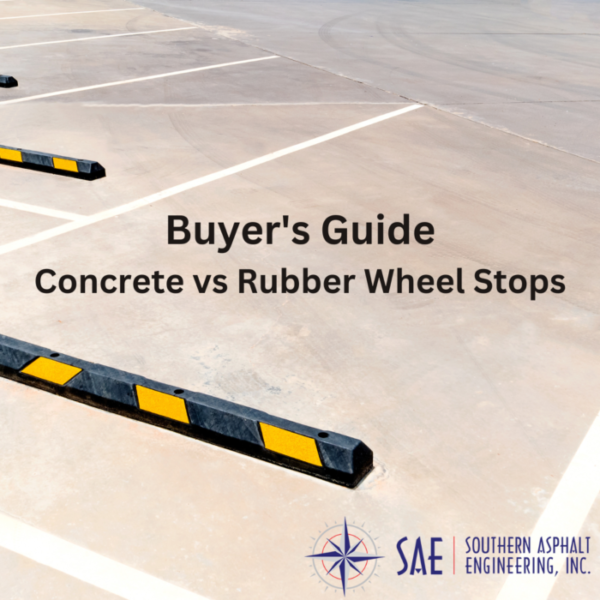When it comes to parking lot safety, wheel stops are essential. Not only do they help prevent accidents, but they also guide drivers into parking spaces and keep pedestrians safe. There are two main types of wheel stops: concrete and rubber. In this buyer’s guide, we’ll take a closer look at the pros and cons of each type to help you decide which wheel stop is suitable for your parking lot.
Concrete Wheel Stops
Concrete wheel stops are popular due to their durability and long lifespan. They are made of solid concrete and are available in a range of sizes and designs. Concrete wheel stops are ideal for areas with heavy traffic, as they can withstand the weight of large vehicles without breaking down.
Pros of Concrete Wheel Stops:
- Durability: Concrete wheel stops are extremely durable and can withstand the weight of heavy vehicles over a long period of time. They will also withstand heavy traffic and extreme weather conditions.
- Stability: Once installed, concrete wheel stops are incredibly stable and won’t move or shift.
- Customization: Concrete wheel stops can be painted or stamped with markings to designate specific parking spots or to add branding to your parking lot.
Cons of Concrete Wheel Stops:
- Installation: Concrete wheel stops require professional installation and can be time-consuming to install.
- Maintenance: Concrete wheel stops can crack or chip over time and require some maintenance over time to keep them in good condition.
- Impact: Concrete wheel stops can cause damage to lower-sitting vehicles if they hit or scrape under the bumper
- Cost: Concrete wheel stops are typically more expensive than rubber wheel stops due to the cost of materials and installation.
Rubber Wheel Stops
Rubber wheel stops are a newer option that has gained popularity due to their affordability and ease of installation. They are made of recycled rubber and are available in various sizes and colors. Rubber wheel stops are ideal for areas with light traffic and are a cost-effective alternative to concrete.
Pros of Rubber Wheel Stops:
- Easy Installation: Rubber wheel stops are lightweight and easy to install, making them an excellent option for DIY projects.
- Flexibility: Rubber wheel stops are flexible and can bend to conform to uneven surfaces. The flexibility helps prevent damage to lower-sitting vehicles.
- Material: Rubber wheel stops are a great eco-friendly solution since they’re mostly made of recycled materials and come in various sizes
- Low Maintenance: Rubber wheel stops require little maintenance and are resistant to weather and UV damage.
Cons of Rubber Wheel Stops:
- Durability: While rubber wheel stops are durable, they are not as strong as concrete wheel stops and may not withstand heavy vehicles or extreme weather events over time, leading to more frequent replacements.
- Stability: Rubber wheel stops may shift or move over time, especially in high-traffic areas, requiring adjustments.
- Customization: Rubber wheel stops are typically only available in a few colors and cannot be painted or stamped.
Which One Should You Choose?
Both concrete and rubber wheel stops have their advantages and disadvantages. When choosing between concrete and rubber wheel stops, there are a few key factors to consider. If you are looking for a long-lasting and durable option for parking lots with high-traffic and heavier vehicles, concrete is the way to go. However, if affordability and ease of installation are your main priorities for a lower-traffic area, rubber wheel stops may be the better choice. Ultimately, the decision comes down to your specific needs and budget.
At Southern Asphalt Engineering, we offer both concrete and rubber wheel stops. Our team of experts can help you determine the best option for your parking lot based on your unique needs and budget. Contact us today to learn more about our parking lot services and how we can help you ensure the safety of your parking lot.
